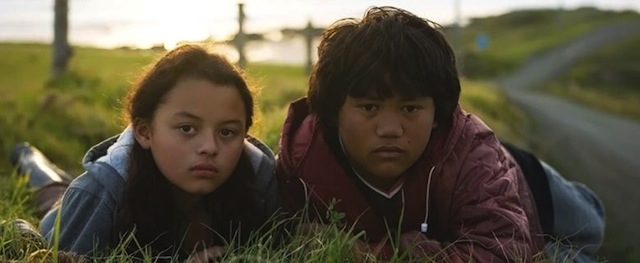Ten years ago when I was working a late night shift in the news on the CBS affiliate in Detroit, and my hours were often unpredictable, we welcomed an au pair into our family. She was from New Zealand. Along with her overflowing enthusiasm for an overseas adventure, she arrived with a videotape showing members of a Maori tribe singing and dancing. The Maoris are the tribal people who lived in New Zealand before white settlers arrived. They landed on the shores of Aotearoa (the Maori word for New Zealand, meaning “Land of the Long White Cloud”) in their waka (canoes) around 1300. White settlers followed, en masse, in the 1800s. Fast-forward to the early 2000s; I remember thinking how odd it was for a Kiwi to highlight her country’s tribal customs. The last thing I would have brought overseas was a reel showing a Native American pow-wow.
When we ended up moving to New Zealand last year, I began to understand. Every national radio broadcast here begins with a Maori introduction; “Kia Ora” isn’t just the name of Air New Zealand’s in-flight magazine, the greeting is part of everyday vernacular; and the national anthem’s first verse is sung in Te Reo Maori, the traditional Maori language. I’ve even had diplomatic friends tell me their first welcome to this country was a “haka.” Interesting. The haka is the rather intimidating Maori war dance the world might recognize as the testosterone-loaded challenge the World Champion rugby team, the All Blacks, perform before each game. Both my boys have now learned individualized versions of the haka at their schools.
At their schools, they start the year with a powhiri (pronounced poe-fir-ee), a Maori ceremonial welcome. I was shocked when the one I attended began with at least a half hour of speeches in Te Reo. Because most of the audience was Pakeha (meaning “settler” – a term still used today for whites), very few likely understood what was being said. Only 4% of the Kiwi population is fluent. I marveled at what I was witnessing and resolved to learn more. Now, I am officially a graduate of an introductory Te Reo Maori course at Victoria University and am just starting to lift the veil on this society-within-a-society that’s at the heart of New Zealand’s culture.
Much of what I learned before this course, frankly, came from movies and documentaries. Maori make up only 15% of the Kiwi population. That said, they are recognizable. Clearly, the Maori only wear their tribal woven flax skirts, and ceremonial cloaks during ceremonies, but I often see members of the community whose faces are half-covered with blue tattoos. These outward traditional customs, carried over into the modern world, can create the impression that a culture is primitive. But westerners often underestimate the wisdom and grounding of people whose history and values so closely intertwine with the natural world in which we live.
The Maori do have a past that includes warring against one another, and even some cannibalism. Today, the Maori community struggles to overcome social problems like unemployment and low incomes, and associated issues of substandard housing, education and healthcare. Statistics show the Maori population struggles with suicide, domestic abuse, substance abuse and a sense of displacement as their traditional values seem to lose relevance in the modern world.
Maori struggles are movingly depicted in movies like Once Were Warriors, the more modern Boy and The Strength of Water. At the heart of these artistic expressions, however, is a universal theme: a kind of spiritual magic and abiding faith as well as a symbiotic relationship with nature.
In this island nation, the ever-present water seems almost maternal: evocative of the earth mother in Maori mythology, Papatuanuku, The ocean absorbs pain and soothes, offering hope, often requiring strength and sometimes even granting purifying absolution.
In the arts, social struggles are painted poetically. In life, they chafe at our comfortable status quo. The real social issues the Maori face eat away at the strength of New Zealand society. And strained relations often make solutions harder to achieve. While now, after decades of activism, respect for the Maori cultural is institutionalized, the Maori/Pakeha relationship is still fraught with tension.
There’s plenty of history to foment this friction. This week New Zealand celebrated Waitangi Day, a national holiday honoring the signing of the Treaty of Waitangi between the Crown and Maori leaders. On that day, February 6 1840, New Zealand officially became a part of the British Empire. The original Treaty of Waitangi was translated unequally and the agreement often ignored. Now, there’s a Waitangi Tribunal that’s successfully redressed some treaty violations. The Maori have received settlements, and continue to assert their rights to natural assets like water. The evolution continues.
Waitangi Day often makes headlines because major celebrations are interrupted by protests and confrontations. It is, of course, this activism that’s helped secure the Maori are recognized in society. And it is this same “stirring the pot” that some now perceive as hurting their cause.
At 45, and as someone who worked covering news stories for 20 years, the push and pull of human society is wholly unsurprising. What I’ve always found more fascinating, and focused on for my viewers and readers, is what lies beneath the surface tension. My reflections highlight what’s beyond the noise that dominates public perception.
I come from a country where our tribal culture, the Native Americans, are effectively marginalized. I’ve settled in a former British colony that’s now morphed into its own Dominion with a unique blend of Western and Pacific cultures. I sense a mix of mutual recognition and conflict, both expressed in protected parameters. Yet at its core, this is a gentle nation. I’m grateful to be immersed in its multi-layered society and I know, by osmosis, I am being forever altered by it.


